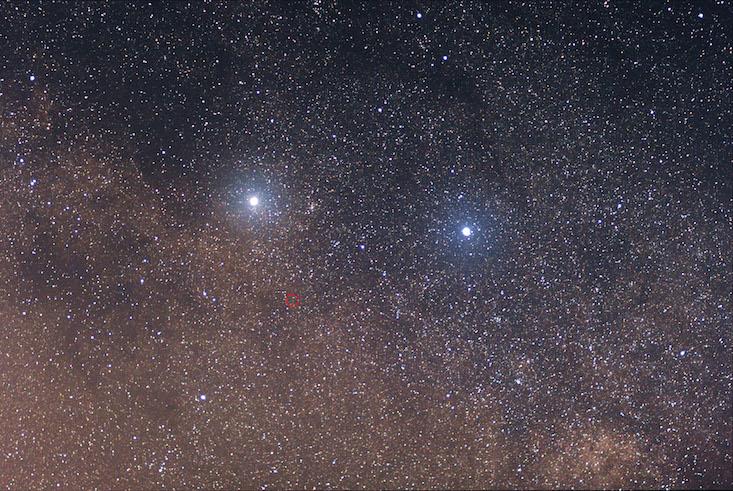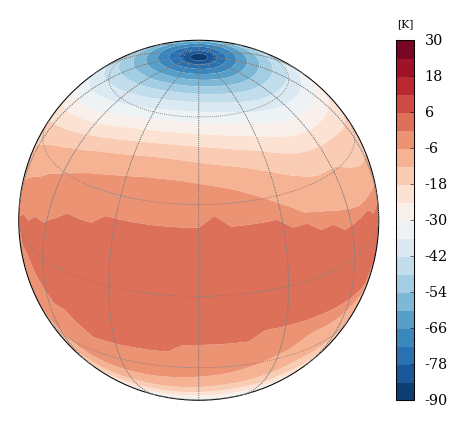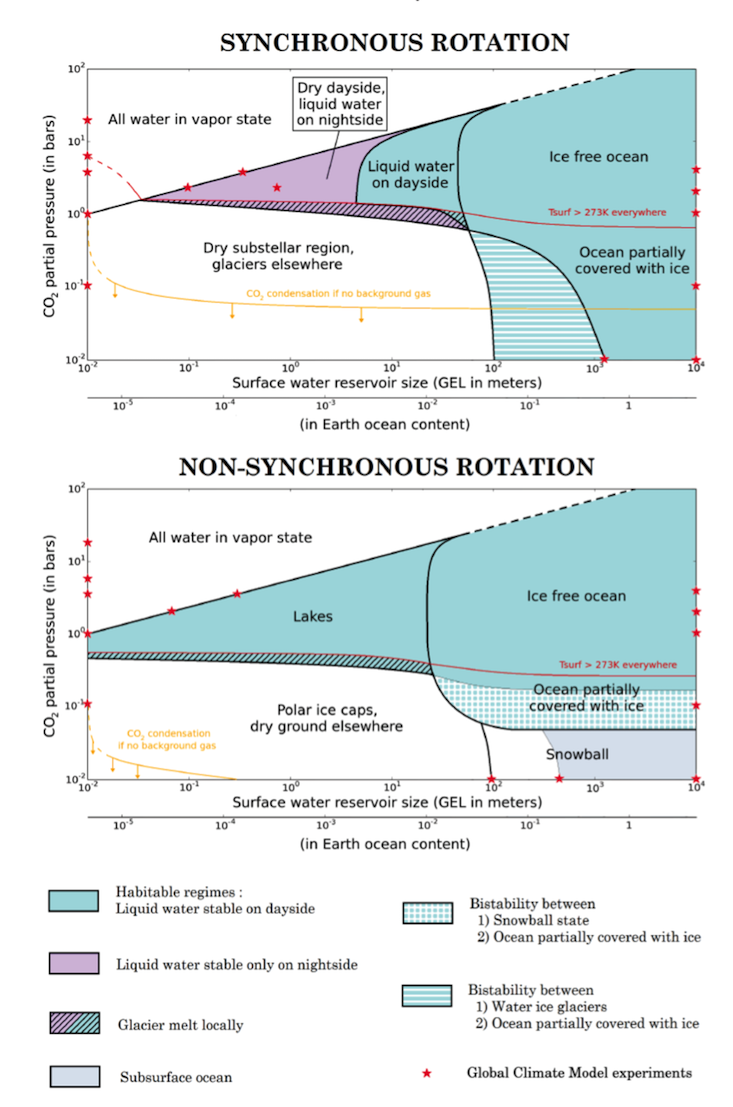A couple years ago, I was part of the team that discovered the first Earth-sized planet, Kepler-186f, rotating comfortably in its star’s “habitable zone,” where water can be liquid. Its sun, Kepler 186, is faint and far away from us—and a little colder than we’d like if we were to settle there—but it does have the potential for life. Nevertheless, Kepler 186f, please see yourself off the “best candidate habitable worlds” shelf.
And the same goes for you, Kepler-62f, Gliese 667Cc, and Kepler-452b. Sure, you are all fascinating planets, but there’s something not quite ideal about each of you: Either your host star is so faint that we won’t be able to learn more about you for decades, or you’re quite a bit larger than Earth, and we’re not sure you are a true rocky planet—for all we know, you could be a masquerading “mini-Neptune.” So move aside! There’s a new standard in town, and its name is Proxima b. This planet has just about everything we’d want in Earth 2.0: It’s just a speck bigger, with only about 30 percent more mass than Earth (or slightly higher, depending on its orbital geometry); it’s almost certainly a genuine rocky planet; and it orbits smack in its star’s habitable zone.
The best part, though, is that Proxima, the planet’s star, is right next door, just 4.3 light-years away (130 times closer than Kepler 186f), the single closest star to our sun. Astronomers across the globe are drooling. We’ll be able to take actual pictures of it, to search for clues of life, within a decade. The European Extremely Large Telescope, a 39-meter behemoth under construction in Chile, should see its first light in 2024. The telescope will be able to directly image Proxima b and see it as a separate object—we won’t have to infer the planet’s presence indirectly (which is how the planet was discovered). This will grant astronomers the tantalizing opportunity to directly probe Proxima b’s atmosphere and surface. We will be able to search for signs of water and even signs of (surface) life.

The discovery of Proxima b, announced today, has motivated a handful of in-depth studies. I was involved with two that address the question of whether Proxima b could really be habitable. I’m not about to buy any real estate there, but, as far as I can tell, there are reasons to be optimistic.
The biggest difference between Proxima b and Earth are their stars: They have drastically different histories, and futures. Our sun is a bright, lazy yellow star that will, in about 5 billion years, become a hostile red giant, subsuming Earth’s orbit. Proxima Centauri, on the other hand, is a fidgety red dwarf only about 10 percent as massive as the sun and 1/700th as bright; it’ll be friendly to Proxima b for another 4 trillion years. Though Earth and Proxima b receive a similar amount of energy, in the form of starlight, growing up in Proxima’s neighborhood is much more of a challenge—like the difference between a gang-ridden inner city and an affluent suburban cul-de-sac. Proxima b’s orbit is only 5 percent as wide as Earth’s, and its year is only 11 days long.
This is the planet we have been waiting for.
Let’s rewind the clock. By the time Earth was fully formed (this took about 100 million years and involved lots of collisions) our sun was in a calm state developmentally, its “main sequence,” where the forces of outward thermal pressure and inward gravitational collapse are balanced. Proxima b probably formed much faster than Earth—likely in just a few million years—and its star took a couple of hundred million years to settle down onto the main sequence, during which time the star was brighter than it is today. As the star slowly settled, the habitable zone swept inward across the orbit of Proxima b. This means that Proxima b spent 100 to 200 million years outside the habitable zone, on an orbit way too hot for life!
When rocky planets get cooked like this, potentially life-bearing “Earths” can turn into dry, inhospitable Venuses. Did this happen to Proxima b? We modeled this process in one of our studies. We found that, before reaching the habitable zone, Proxima b could have lost up to 1 “Earth ocean” of water (the amount of water on Earth’s surface) to evaporation. But it may also have an additional source of water trapped in the mantle; Earth, for example, has roughly between 0.3 and 10 Earth oceans underneath the surface. If our oceans were suddenly zapped into space, water would be replenished to some degree by outgassing from volcanoes.

But we don’t know how much water the planet started with. This is because we don’t know how the system formed, which is when the planet’s water budget was set. It is entirely plausible that the planet started off drier than Earth, or wetter, or just as watery. Proxima b might have started with two oceans on its surface and finished with one, or started with a 100 and finished with 99, or started with half of one and ended with none. We just don’t know.
Let’s assume, for the sake of argument, that Proxima b had held onto some amount of water and an atmosphere when it entered the habitable zone. What might the planet’s climate be like?
Our team performed a suite of 3-dimensional simulations of Proxima b with different conditions to find out. There is a whole smorgasbord of possible climates for Proxima b, which all depend on at least three factors: the amount of water on the planet’s surface, the abundance of greenhouse gases (which we modeled as carbon dioxide), and how the planet spins.
Earth, as you may have noticed, spins fast—365 times for every orbit of the sun. Proxima b, by contrast, is so close to its star that tides limit the planet’s spin to two possibilities. Proxima b could be rotating synchronously, always showing the same face to the star, as the moon does to Earth; or Proxima b could be locked in a spin-orbit resonance, spinning exactly three times for every two orbits, like Mercury. The planet is definitely in one of these states but we don’t know which.
If the planet’s spin is synchronous, then there is a hot spot on its surface where it star, Proxima Centauri, is always directly overhead, and a cold hemisphere where its star never shines. If the planet only has a small amount of water—less than about a 10-meter thick layer if spread over the whole planet—then there can be lakes on the cool night side but no liquid water on the dayside. This is one flavor of an “eyeball planet,” one with a strong dichotomy between the planet’s day- and night-side hemispheres. However, if the atmosphere is too thin, then water can be trapped as ice on the planet’s cold night side—another, less promising, form of an eyeball planet. And if the atmosphere is too thick? Then all water will remain trapped as vapor in the atmosphere.
If a synchronous Proxima b has significantly more water than a 10-meter thick layer, then the dayside can also have lakes or even a global ocean. It’s possible to expect some ice cover, too, depending on the atmosphere, and even for the ocean to only be thawed near the planet’s hottest point, creating an icy eyeball world. (The temperatures below are in Celsius, not Kelvin.)

If Proxima b’s spin isn’t synchronous, then the hottest part on the planet would be an equatorial band. If the planet contains just a small amount of water, then there would be lakes along the equator, and for larger amounts of water, a global ocean warmest at the equator. With a thin atmosphere, it could have polar icecaps. Unlike the synchronous case, the planet would be vulnerable to a global freeze (like a permanent ice age) but only if the atmosphere is very thin with abundant water.


So the punch line is that Proxima b can retain liquid water on its surface for a wide range of conditions—but only if it held on to some water while its star went through its youthful tantrums. Another potential obstacle to habitability is the amount of energetic radiation Proxima b receives compared to Earth: 250 times more X-rays and 30 times more extreme ultraviolet light. What this means for the planet’s atmosphere is unclear, but it’s probably not a deal-breaker for life.
This is the planet we have been waiting for.
Sean Raymond is an astronomer studying the formation and evolution of planetary systems. He also blogs at planetplanet.net.
The lead photograph is courtesy of Hubble ESA via Flickr.


























